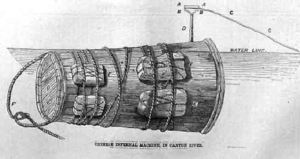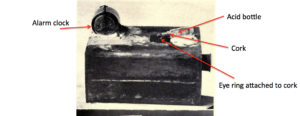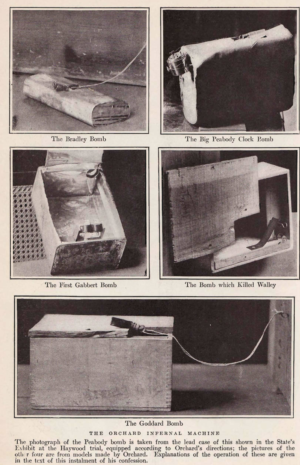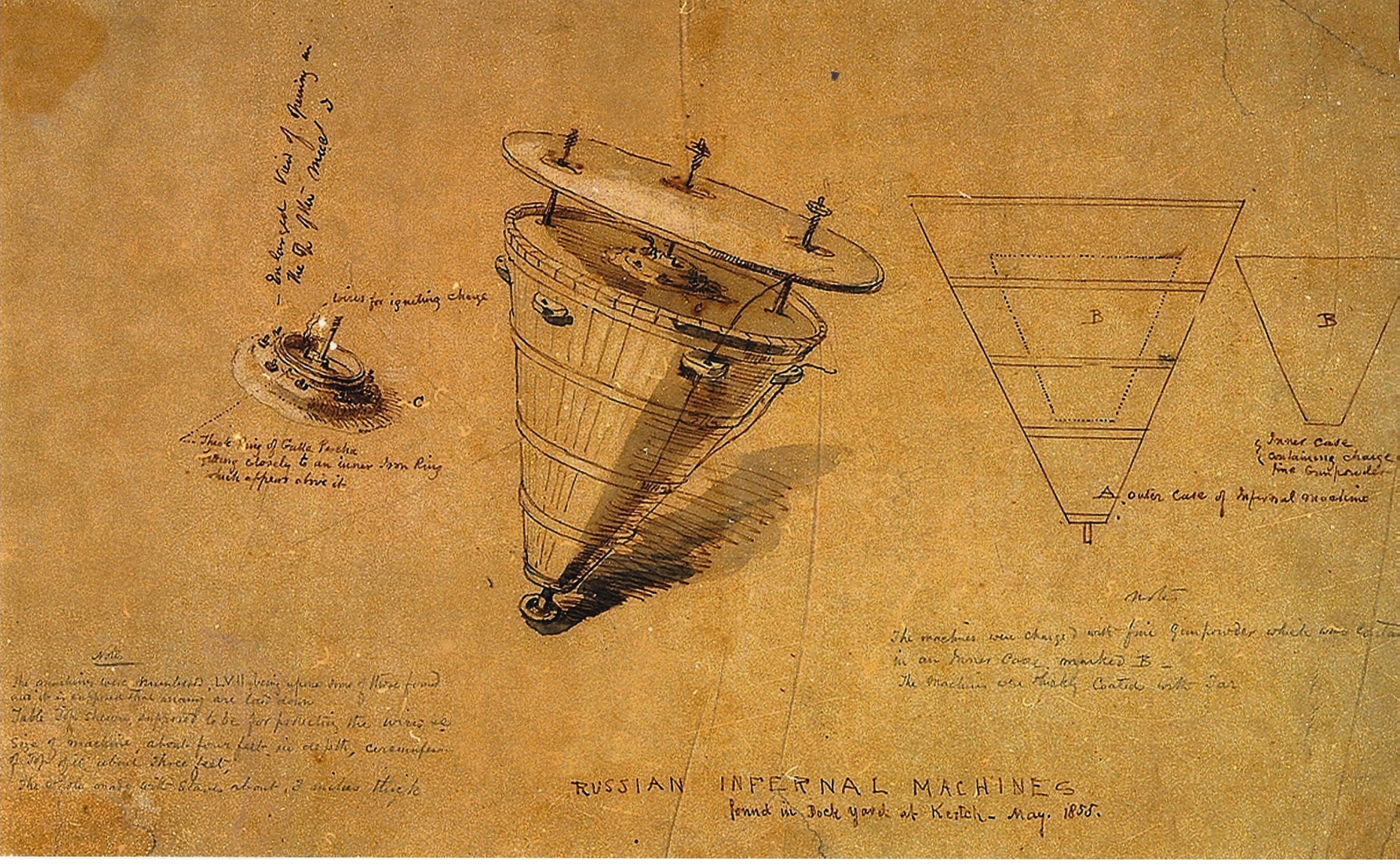Here’s an interesting story about a failed IED attack on a British Naval vessel in 1857. Britain was at war with the city of Canton in China in what was called the “Opium War”. Two British naval vessels, the “Niger” and the “Encounter” were patrolling the Pearl River. A couple of months earlier two small boats had exploded next to the Niger, so a strict policy of look-outs and challenges was being enforced to keep small boats at bay. At 4 am on 7th January 1857, a look-out on the Encounter spotted a man in a small boat sculling towards the ships. He challenged him and on not getting the appropriate response, shot him dead. A ship’s boat was launched and they recovered two large explosive charges, each with over a half a ton of explosives. The charges consisted of sealed wooden barrels weighed down with stone so that they only just floated. Protruding from the barrel was a gunpowder filled tube to a small platform on which glowing embers were placed. The embers were kept separate from the gunpowder in the tube by a metal tray or slide attached to a piece of string. The render safe procedure used was to splash water onto the embers. The plan was that the two barrels linked by rope would float down and the rope fastening them together would catch the bow of the Encounter, then pushing the barrels close either side of the ship. Then the boatman would pull the string to pull out the slides on each barrel, causing the glowing embers to ignite the gunpowder.
Here’s a picture of one of the two charges:

The tactical design has great similarities to British IED attacks in 1804 on the French, although the initiation system is somewhat exotic.




